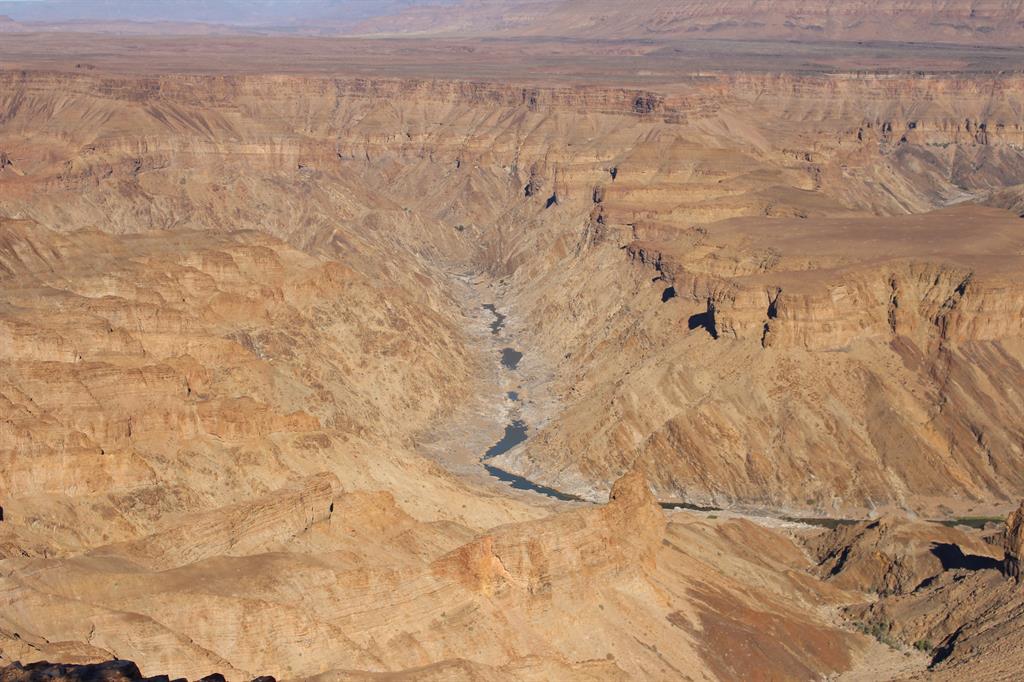Cold snap continues today
Most Namibians are advised to remain wrapped up warmly today, especially in the southern parts, as the cold front enveloping the country from the southern tip of the continent continues to lower temperatures close to freezing point in many areas.
“The intense cold front will cause rain and strong winds in the Western Cape and the Northern Cape (of South Africa) and in the southern regions of Namibia,” chief forecaster at the Namibia Meteorological Service (NMS), Odillo Kgobetsi, confirmed yesterday.
He added that apart from the south, where very cold weather will lead to a significant drop in temperatures this morning, the central and eastern regions will also be grappling with cold temperatures.
However, although freezing temperatures will continue today, Kgobetsi added that “general warming is expected from Thursday onwards”.
Today's lower temperatures are expected to range between two and five degrees Celsius.
Daytime temperatures in the south are expected to reach between 12 to 16 degrees Celsius, while temperatures will range between 18 to 23 degrees Celsius in the central and eastern regions.
In the northern regions, daytime temperatures are expected to range between 25 and 31 degrees Celsius.
Yesterday, South African-based Land Water, which regularly disseminates weather system information to the public, advised that in the neighbouring country, “rain in the south will slow down to temporary bursts in places, interspersed with episodes of sunshine and rain, as the cold front system moves”.
Land Water announced the centre of the cold front is slowly moving east, before it is expected to turn southeast at a later stage.
“It will push cold in stronger, with snow already in places during the afternoon, but especially overnight.”
Thunderstorms were also expected to occur yesterday into the night, as a result of the cold front system.
Weather expert Mike Berridge from South Africa reported yesterday that the unstable frontal system has now developed into a “fully developed mid-latitude cyclone”, which has led to heavy rains in parts of the Cape, strong winds and a “”very cold zone”, which is expected to bring snow to the mountains and high grounds of the south and south-western parts of the Cape.
He said next it is expected the “cyclone system will move out into the Indian Ocean tomorrow (Wednesday) and will be replaced with a strong high pressure ridge… in the Atlantic Ocean”.
“This will cause the fronts to collapse as very dry cold air from the west invades the system. This will result in strong overnight frosts in the eastern interior (including south Gauteng) on Wednesday to Thursday.”
JANA-MARI SMITH
“The intense cold front will cause rain and strong winds in the Western Cape and the Northern Cape (of South Africa) and in the southern regions of Namibia,” chief forecaster at the Namibia Meteorological Service (NMS), Odillo Kgobetsi, confirmed yesterday.
He added that apart from the south, where very cold weather will lead to a significant drop in temperatures this morning, the central and eastern regions will also be grappling with cold temperatures.
However, although freezing temperatures will continue today, Kgobetsi added that “general warming is expected from Thursday onwards”.
Today's lower temperatures are expected to range between two and five degrees Celsius.
Daytime temperatures in the south are expected to reach between 12 to 16 degrees Celsius, while temperatures will range between 18 to 23 degrees Celsius in the central and eastern regions.
In the northern regions, daytime temperatures are expected to range between 25 and 31 degrees Celsius.
Yesterday, South African-based Land Water, which regularly disseminates weather system information to the public, advised that in the neighbouring country, “rain in the south will slow down to temporary bursts in places, interspersed with episodes of sunshine and rain, as the cold front system moves”.
Land Water announced the centre of the cold front is slowly moving east, before it is expected to turn southeast at a later stage.
“It will push cold in stronger, with snow already in places during the afternoon, but especially overnight.”
Thunderstorms were also expected to occur yesterday into the night, as a result of the cold front system.
Weather expert Mike Berridge from South Africa reported yesterday that the unstable frontal system has now developed into a “fully developed mid-latitude cyclone”, which has led to heavy rains in parts of the Cape, strong winds and a “”very cold zone”, which is expected to bring snow to the mountains and high grounds of the south and south-western parts of the Cape.
He said next it is expected the “cyclone system will move out into the Indian Ocean tomorrow (Wednesday) and will be replaced with a strong high pressure ridge… in the Atlantic Ocean”.
“This will cause the fronts to collapse as very dry cold air from the west invades the system. This will result in strong overnight frosts in the eastern interior (including south Gauteng) on Wednesday to Thursday.”
JANA-MARI SMITH




Comments
Namibian Sun
No comments have been left on this article